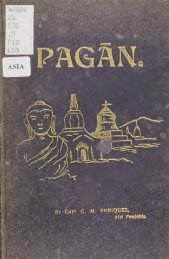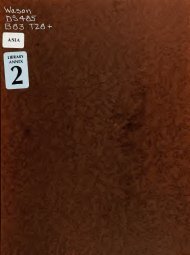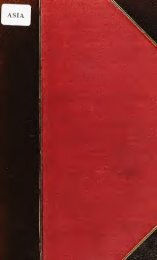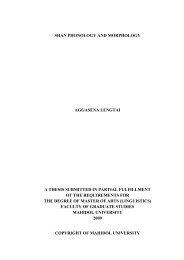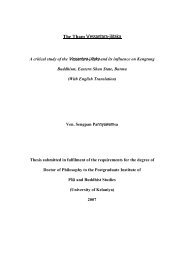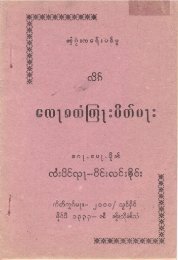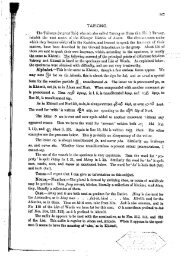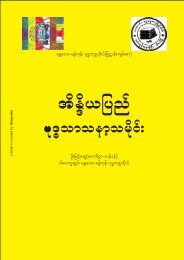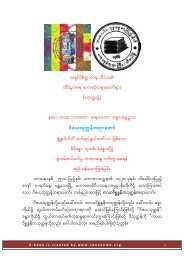The Tai Ahom National Council Memo Scheduling
The Tai Ahom National Council Memo Scheduling
The Tai Ahom National Council Memo Scheduling
Create successful ePaper yourself
Turn your PDF publications into a flip-book with our unique Google optimized e-Paper software.
Dalton, Ethnology of Bengal; Alexander Mackenzie, History of Relations of the Government with<br />
the Hill Tribes of Nor-East Frontier of Bengal, 1884; L. A. Waddell, Tribes of the Brahmaputra<br />
Valley). “Assimilation” of the <strong>Ahom</strong> into the fold of Assamese is taken to be “complete” and<br />
their loss of religion and language is taken for granted. Such opinions received wide circulation,<br />
both within and outside the country, and in consonance with this theory local writings appeared<br />
extolling the <strong>Ahom</strong> virtue for their loss of language and religion by referring to the “adage”<br />
prajar dharmoi rajar dharma (meaning religion of the subject people is the religion of the ruler).<br />
<strong>The</strong> <strong>Ahom</strong> received high praise for their “loss” of language and religion, and were acclaimed for<br />
their patronization of Hindu religion. In this way, a very “ironic” situation was created, and the<br />
<strong>Ahom</strong> themselves unconsciously fell victim to it by forgetting that the <strong>Ahom</strong> rulers had never<br />
forsaken their original faith and practices, their culture and languages, rather they maintained<br />
them to the end. However, such opinion influenced many subsequent writers who, without<br />
properly verifying facts, dittoed it.<br />
Curiously enough the same yardstick has not been applied to other local Hindu or Hinduised<br />
communities of Assam such as the Kachari, Chutiya, Rabha and also the Brahmin and Kayastha<br />
and even the Muslim in Assam, who had also received blood from others more than the <strong>Ahom</strong>s<br />
did. Nobody harps on the “mixed” blood of the Brahmins in Assam but considered them as<br />
“pure” Brahmins. “<strong>The</strong> Kachari are very mixed” and scattered population, writes Professor<br />
Gordon T. Bowles (<strong>The</strong> Peoples of Asia, p. 348). Yet nobody raises purity of blood of the<br />
Kacharis-Sonowals in Upper Assam who are now Scheduled Tribes. Why then the case of the<br />
<strong>Ahom</strong> is singled out?<br />
<strong>Ahom</strong> Retained Ethnicity: No Large-scale Mixing with Pre-<strong>Ahom</strong> Locals:<br />
Hard Historical Evidence. <strong>The</strong>ir own chronicles called buranj,i written in their own <strong>Ahom</strong><br />
language, records that they came from Mong Mao now included in the Dehong Dai-Singpho<br />
Autonomous Prefecture in Yunnan. <strong>The</strong> original number is given a little more than nine<br />
thousand. (<strong>Ahom</strong> Buranji translated and edited with original text by Rai Sahib Golap Chandra<br />
Barua published by the Assam Administration, 1930, p. 44; Deodhai Asam Buranji edited by<br />
Suryya Kumar Bhuyan, M.A., B.L. (Cal.), Ph. D. (Lon.), D. Litt. (Lon.) published by the<br />
Department of Historical and Antiquarian Studies, Gauhati, second edition 1962, p. 6. Dr. S.K.




